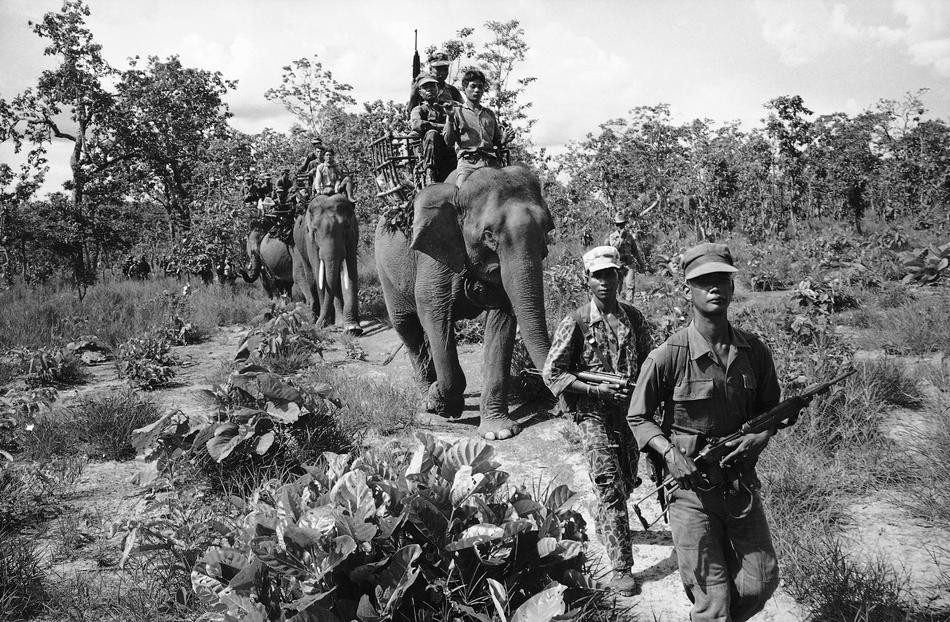Elephants, Women... Five Things You Should Know About World War I — 100 Years After
On Friday, President Muhammed Buhari left Abuja for Paris to participate in the first edition of the Paris Peace Forum, scheduled for Sunday. While in Paris, Buhari he joined other world leaders to commemorate the centenary anniversary of the Armistice signed on November 11, 1918, between the Allied Forces and Germany in the forest of Compiegne in France to end the First World War, which lasted four years (1914-1918).
A hundred year is a long period of time in history; definitely most of the people alive today were not alive then. Here, we serve you five things you need to know about the World War 1.
HOW IT HAPPENED
Since war often happens when seething mistrust and bad blood is brought to a head, the killing of Archduke Franz Ferdinand, heir to the Austro-Hungarian Empire and his wife, Sophie struck the spark that eventually ignited the World War 1. This is because before the war, there had been brewing tension across Europe, especially in the Balkan region of southeast Europe, which made it easy for Austro-Hungarian Empire to sense foul play. The Empire believed the killing of the heir and his wife was premeditated. The identity of the man who pulled the trigger compounded the problem. The man who fired the bullets that killed the Austro-Hungarian heir and his wife was Gavrilo Princip, a Serbian nationalist. Princip, for being one of the Serbian ationalist agitating for an end to Austro-Hungarian rule over Bosnia and Herzegovina made the Empire believe the supposed assassination was national rather than personal. And it is often expected in a full-blown war on that scale, alliances were formed. This led to the collapse of the tenuous peace between Europe’s great powers. It also resulted in a divide that saw Great Britain, France, Russia, and Italy (the Allied Powers) on one side backing Serbia, and Germany, Bulgaria and the Ottoman Empire (the Central Powers) on the other side supporting the Austro-Hungarian Empire. On July 28, 1914, a month after the supposed assignation of Franz and his wife, an Armageddon of a war started.
WOMEN TOOK UP ARMS TOO
Call them the heir apparent to Joan of Arc, a national heroine of France who, at the age of 18, led the French Army to victory over the English at Orleans and you will not the wrong. The Russian forces enjoined to enlist female shock battalions in order to boost morale later in the course of the war. Some of the women were so intrepid that even after when the discontinuation of the practice was announced publicly, they continued to fight for the regular units.
An Elephant Lent A Helping Hand
For conveyance of much-needed munitions, animals were deployed into services in the war. Remarkable among these animals for the way she was dressed and for her doggedness was a Lizzie, an Indian elephant, who wore a pair of rugged boots as she conveyed food and other necessities in the town of Sheffield.
Countries Gained Their Independence After The War
Nine countries like a phoenix rose out of the ashes left in the crucible of the war: Latvia, Finland, Lithuania, Poland, Austria, Hungary, Czechoslovakia, Yugoslavia and Estonia. These countries were able to exist independently after the collapse of the Austria-Hungarian Empire. Two of these countries — Czechoslovakia and Yugoslavia — were entirely new.
It Gave Birth To The League Of Nations, Forerunner Of United Nations
To forestall recurrence of a war on the scale of World War, at the end of World War 1 in 1918, the league of nations was created. Conspicuous in the charter of the organization is that it was created to “promote international cooperation and to achieve peace and security”. However, the rise of Hitler caused the organization to be disbanded, making way for the United Nations.
News
Reports
AddThis
:
Featured Image
: 
Original Author
: SaharaReporters, New York
Disable advertisements
: Source:
Elephants, Women... Five Things You Should Know About World War I — 100 Years After

















